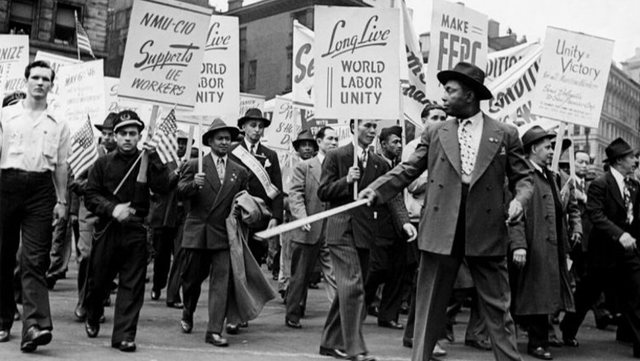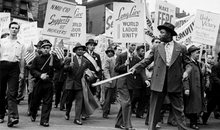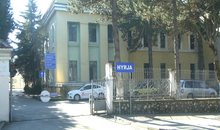
 Flash News
Flash News
Fight between teenagers, 15-year-old ends up in hospital
Kosovo Assembly constitution, proposal for secret ballot fails
Serious accident on the Peqin-Elbasan axis, two people seriously injured
'Fight, fight, fight'/ PD-ASHM towards historic victory, LaCivita mobilizes the campaign at the meeting with the candidates
Car hits pedestrian on Korça - Pogradec road, 43-year-old woman dies

May 1 is otherwise known as International Workers' Day, a manifestation that arose from the struggle of workers to demand rights, freedoms, and working conditions.
"There will come a time when our silence will be more powerful than the voice you are suppressing today."
These were the last words of August Spies, one of the four innocent workers who were executed after a bomb exploded in Chicago's Haymarket Square in May 1886, killing eight key leaders of the labor movement. The "crime" for which Spies and his comrades were being punished was being militant in the struggle that workers had undertaken for their rights and the 8-hour workday.
The movement began in 1884, when the Organized Market Federation and Union of Laborers (the predecessor of the American Federation of Labor) drafted a resolution that “beginning May 1, 1886, the working day for all workers should be 8 hours.” On May 1, 1886, over 200,000 workers, gathered in Chicago’s central square, would go on strike to demand their rights.
While the newspapers would evaluate them as "absurd". The death of 7 police officers during the protests, which had been going on for many days, was the cause of the Chicago Police's reaction to the workers' movement. As a result of a bomb thrown by the police forces, 8 key leaders of the labor federation were killed, thus turning May into the month of commemoration of the workers' efforts to win their rights.
Three years later from the Chicago event, in 1889, the Second Socialist International, which took place in Paris (France), established the celebration of May 1 as a day of unity, struggle and solidarity of all workers of the world.
Today, almost 122 years later, May 1st is celebrated around the world as International Workers' Solidarity Day.
Latest news


The six best foods against stomach bloating
2025-05-01 20:04:09


Zelensky: We want peace, Russia responds with attacks
2025-05-01 19:22:07

Berisha: The contract in the US is not just for the DP, but for every Albanian!
2025-05-01 19:08:14
Fight between teenagers, 15-year-old ends up in hospital
2025-05-01 18:44:17






Demi Moore named the most beautiful woman in the world for 2025
2025-05-01 17:34:10
Waltz to step down as Trump's national security adviser
2025-05-01 17:24:25

What has Albania exported the most?
2025-05-01 16:49:18
Accident at 9-story building in Tirana, two injured
2025-05-01 16:47:16
How is lifestyle affecting health? Expert: Addictions are causing malnutrition
2025-05-01 16:32:09
Kosovo Assembly constitution, proposal for secret ballot fails
2025-05-01 16:22:35

Britain in talks with France and Saudi Arabia on recognizing Palestinian state
2025-05-01 15:57:30

Russian drones strike major cities in Ukraine
2025-05-01 15:39:45
Farmers in difficulty, Egyptian potatoes outstrip Steblevë's
2025-05-01 15:31:36
Serious accident on the Peqin-Elbasan axis, two people seriously injured
2025-05-01 15:15:25
Inaugurated a few months ago, Zhupa: Handball stadium, dangerous for children
2025-05-01 15:10:19
Eurostat: Albanians are paid less, but have the longest working hours in Europe
2025-05-01 14:57:32
The most effective vitamins for strengthening the immune system
2025-05-01 14:53:06

May 1/ Workers in Kosovo protest for their rights, demand wage increases
2025-05-01 14:33:55

Roven Zeka met in the cell, SPAK investigates 4 police officers, phones seized
2025-05-01 14:17:09




Xhaferri: Pro-Rama polls are manipulated by incinerator payments
2025-05-01 13:23:16
51-year-old woman disappears in Kukës, search begins
2025-05-01 13:02:20

Fallen in England, 32-year-old woman dies after falling from parachute
2025-05-01 12:44:54





Staged explosion in Elbasan, head of family wanted asylum in the EU
2025-05-01 11:17:10
Muzhaqi: ChatGPT prepared a very beautiful speech for me
2025-05-01 11:11:29
Berat Prosecution seeks 6 years in prison for pedophile who molested a minor
2025-05-01 10:53:00

TNT explosion in Elbasan, police react: Cameras have filmed the perpetrator
2025-05-01 10:28:31
7x7 doesn't make 6 million for us, but 33 thousand euros!
2025-05-01 10:23:13

TNT explosion in an apartment in Elbasan
2025-05-01 10:03:01
Accident on the "Memaliaj-Krahës" axis, 71-year-old man loses his life
2025-05-01 09:44:45


Vehicle bombed in Tirana, explosives placed in front tire
2025-05-01 09:10:30

Car hits pedestrian on Korça - Pogradec road, 43-year-old woman dies
2025-05-01 08:39:39
Sunshine and temperatures up to 30 degrees Celsius, weather forecast
2025-05-01 08:21:48
Today is Workers' Day, what does May 1st represent?
2025-05-01 08:05:44
Posta e mëngjesit/ Me 2 rreshta: Çfarë pati rëndësi dje në Shqipëri
2025-05-01 07:55:45
Journalist: Rama used the money to lobby for himself, not for Albania
2025-04-30 22:54:10
Kurti's invitation to constitute the Assembly, PDK responds, LDK refuses
2025-04-30 22:36:18











Fiscal peace or electoral coup?! Businesses owe 1.6 billion euros to the state
2025-04-30 18:59:05


Finland passes law banning cell phones in schools
2025-04-30 18:00:25

Italian court overturns Hysaj's conviction, Albanian defender fined 40,000 euros
2025-04-30 17:32:13


Minerals deal with US could be signed within next 24 hours, Ukraine confirms
2025-04-30 16:53:19

Stress at the office can be more dangerous than smoking!
2025-04-30 16:18:54
BKH leader Aida Hajnaj seeks a second 5-year mandate
2025-04-30 16:18:43


By 2023, over 350,000 people had left Kosovo.
2025-04-30 15:23:56

They broke the window of the bar to steal, 2 people were arrested in Kurbin
2025-04-30 14:50:31


Elections in Lezha: Amidst disappointment, pressure and pragmatic calculations
2025-04-30 14:17:42

GJKKO overthrows Fran Marashi to exit the 41 biss regime
2025-04-30 13:47:56
